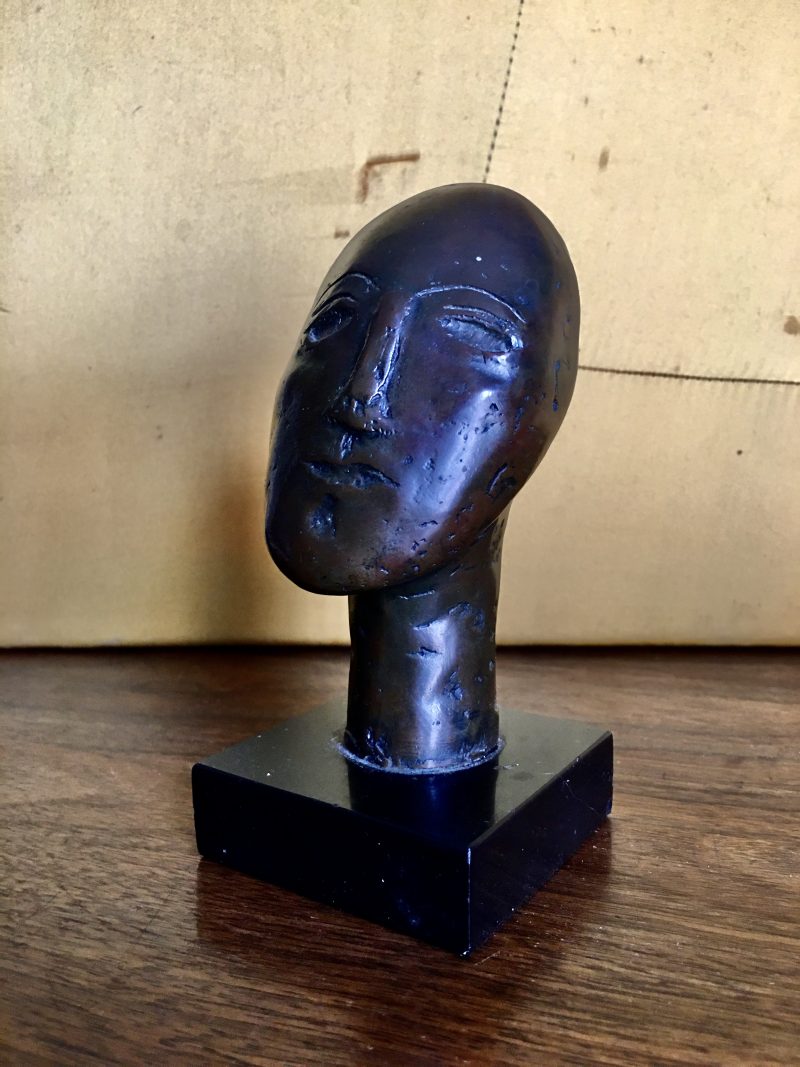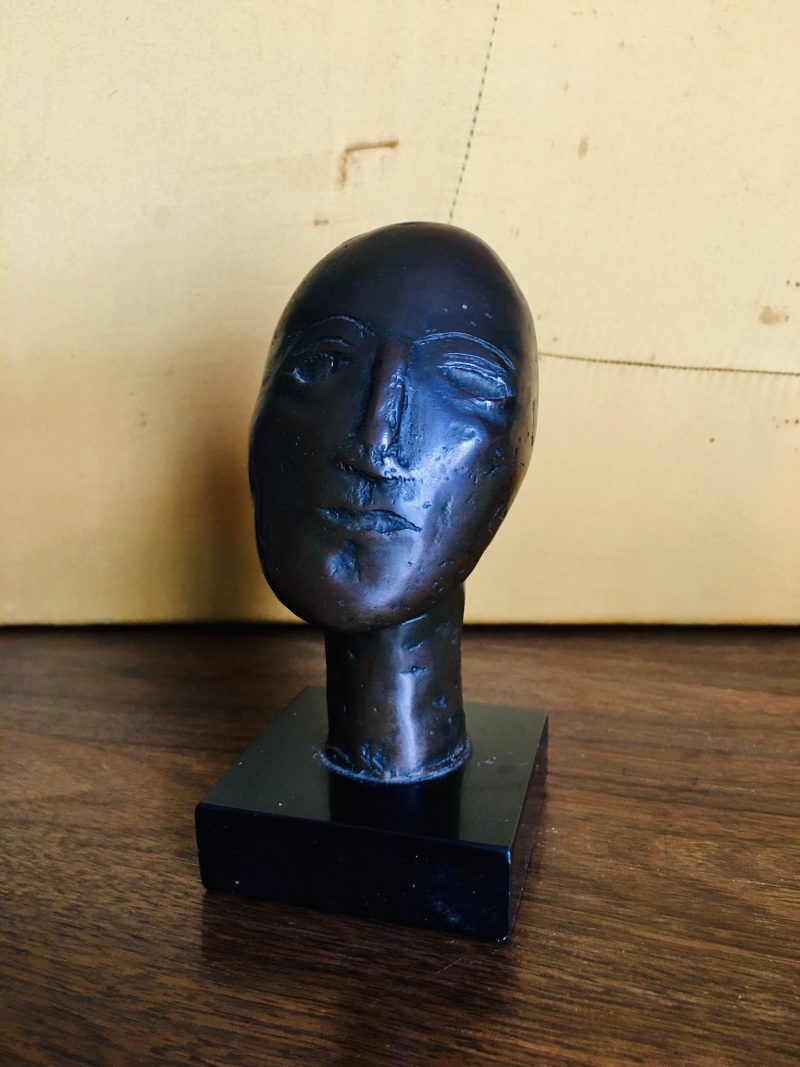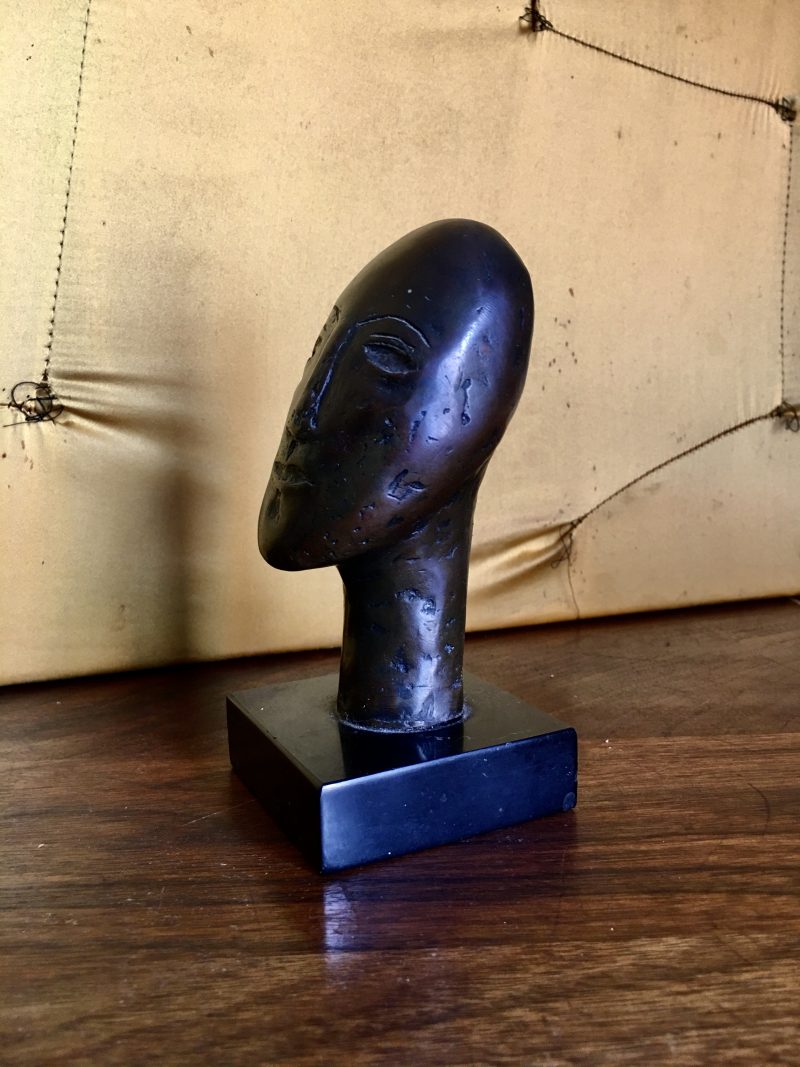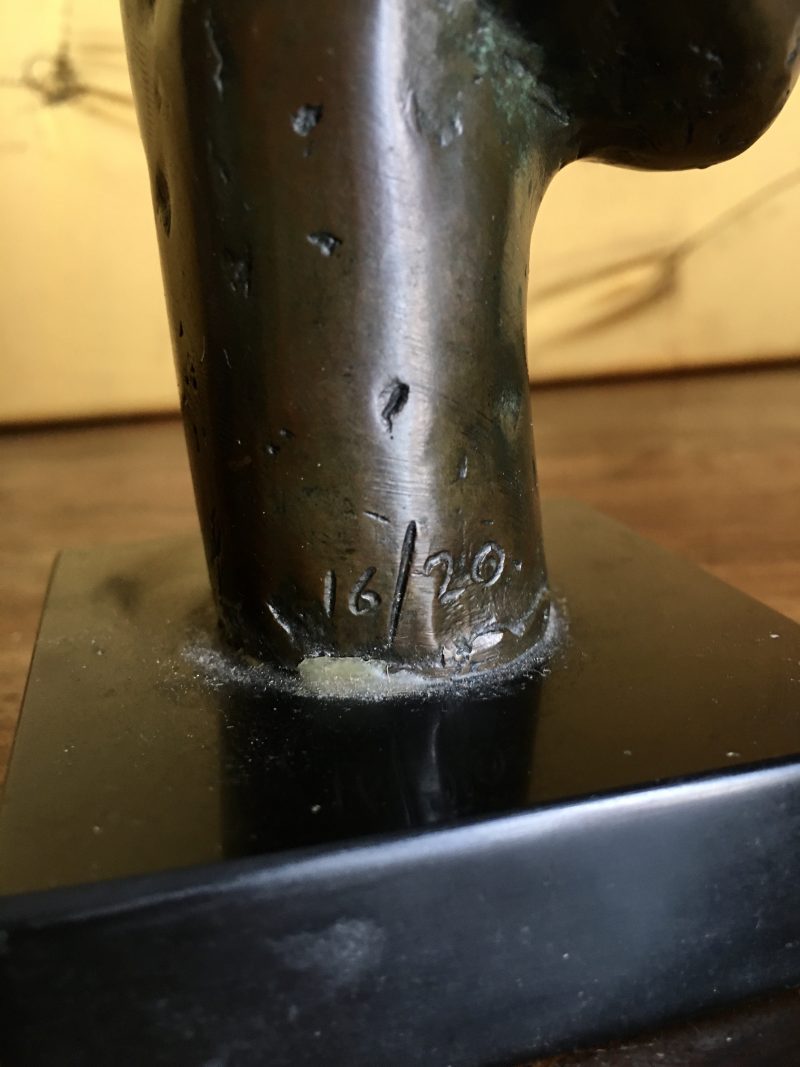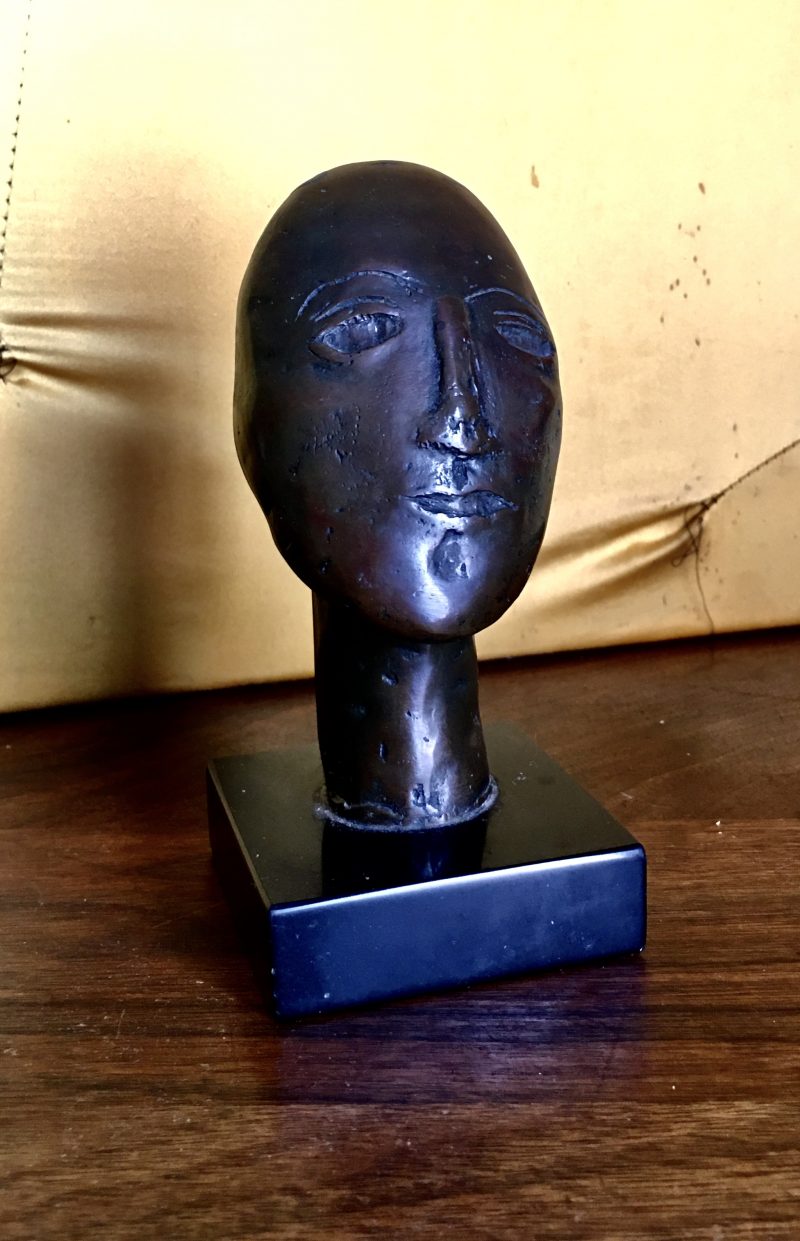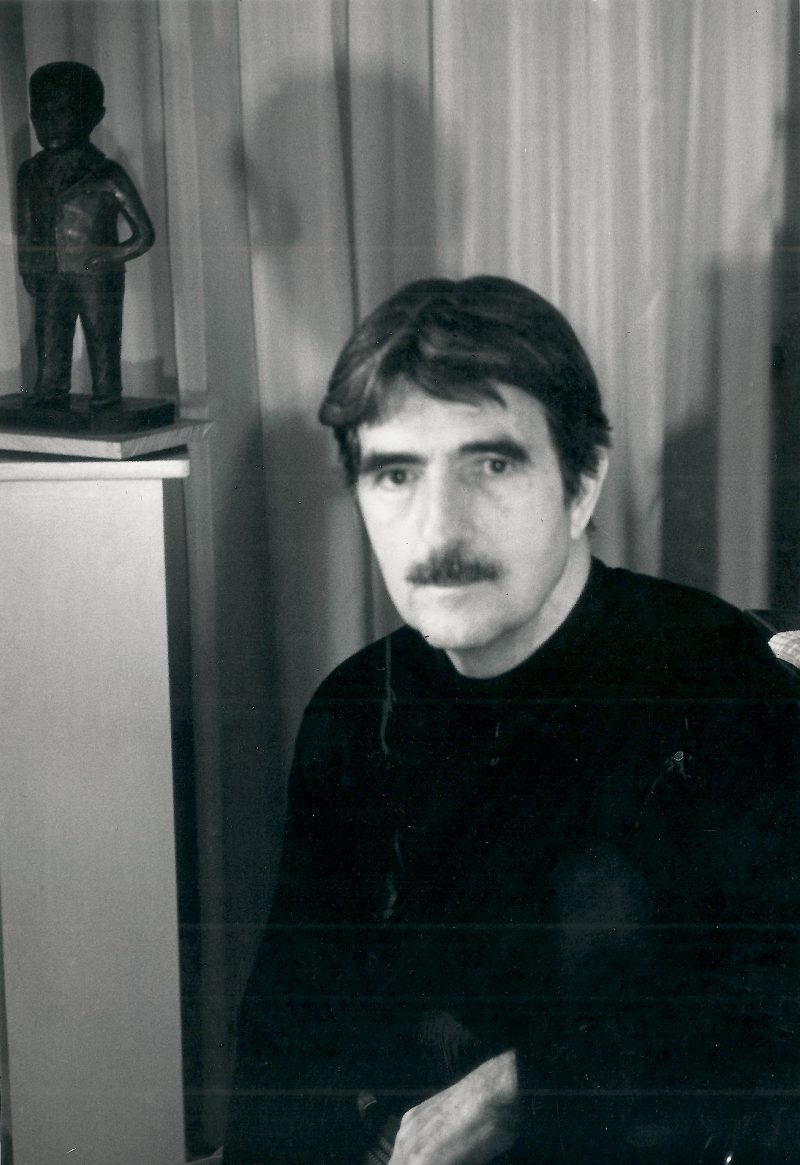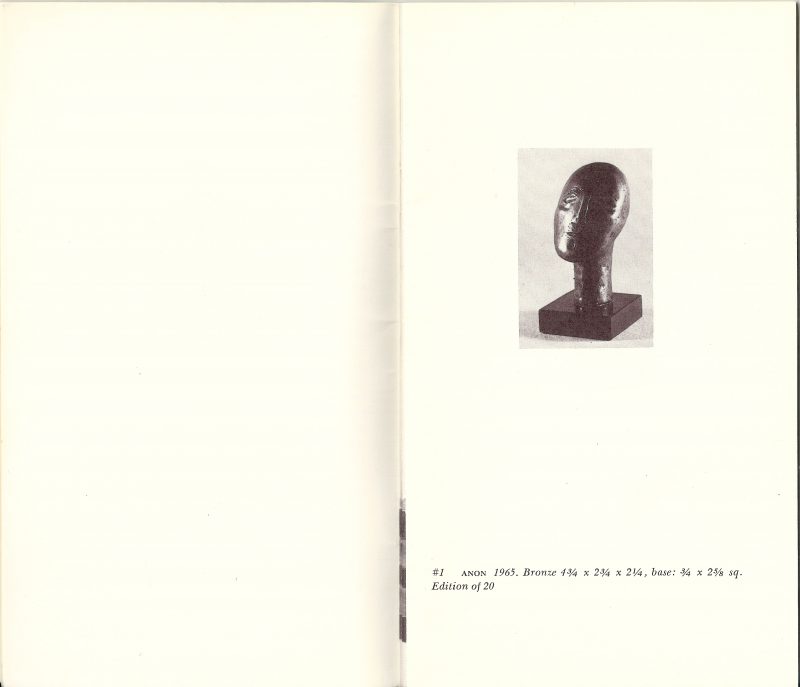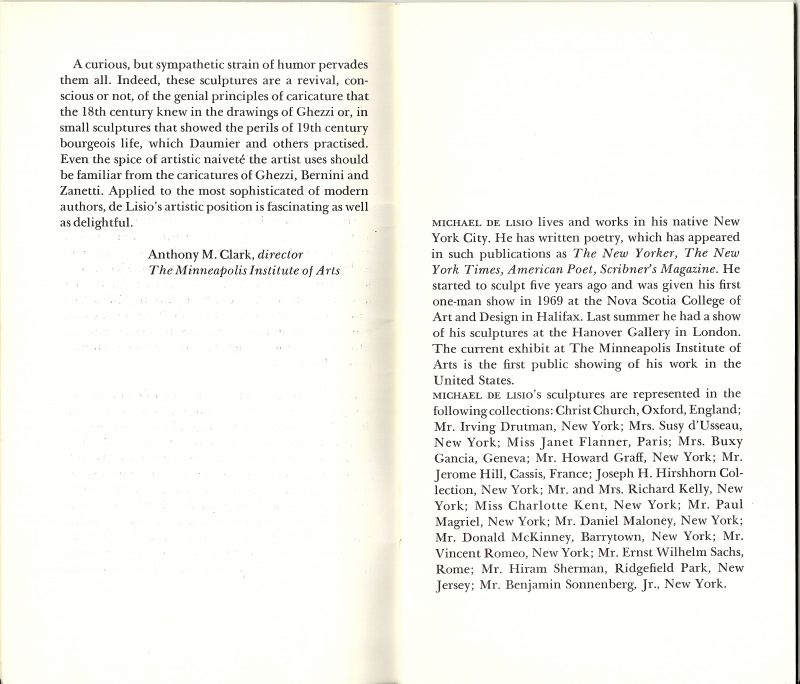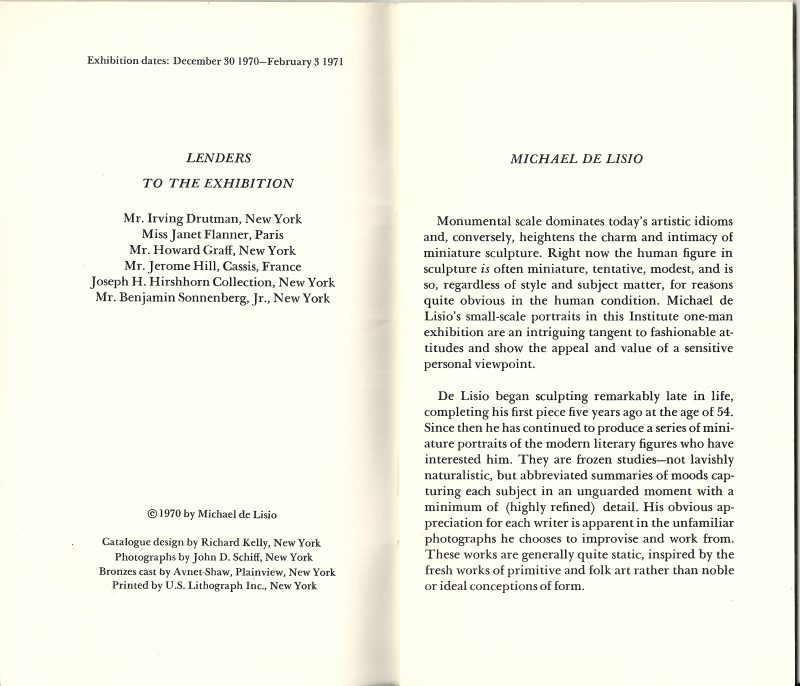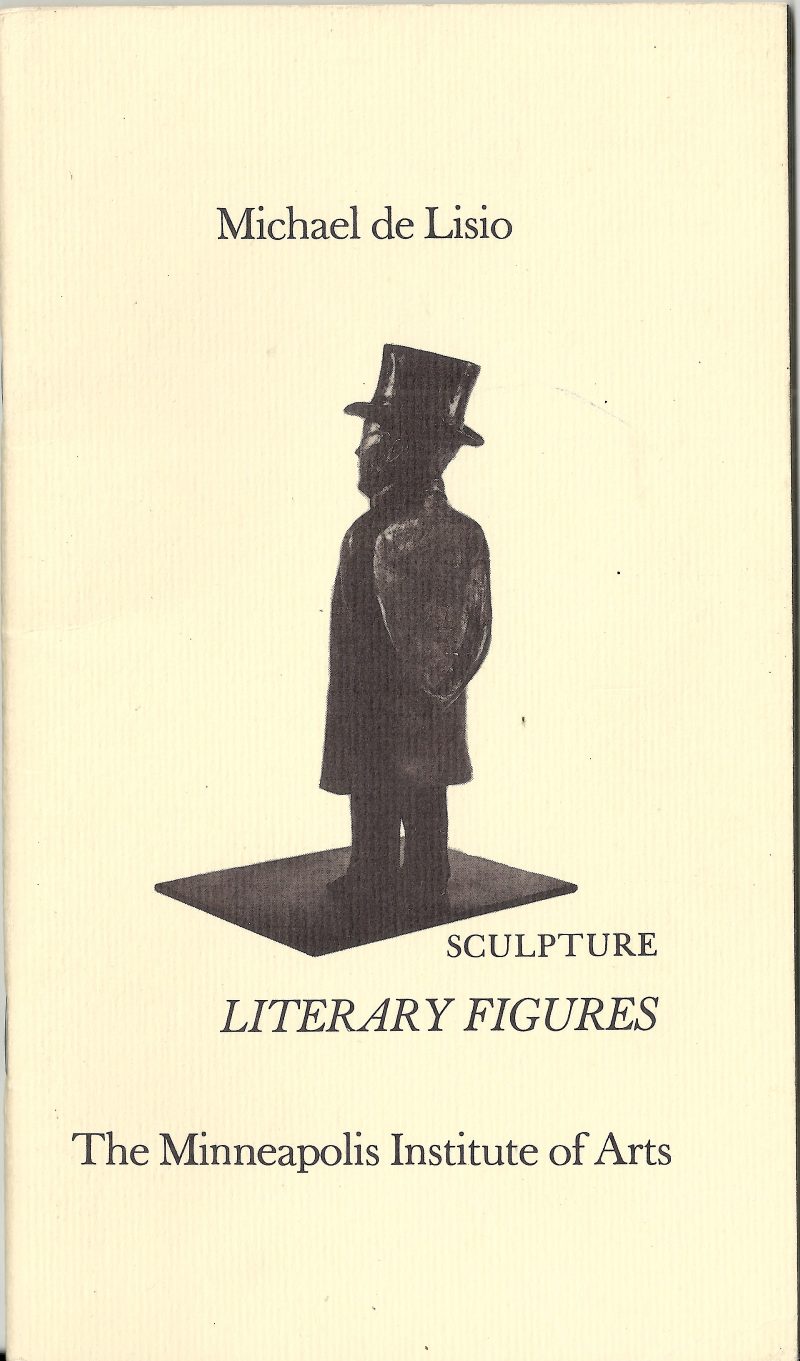Michael De Lisio (American 1912-2003) Sculpture Portrait ANON 1965
| Michael De Lisio (American 1912-2003) Bronze Sculpture Portrait ANON 1965 | |
| Deleted: | |
| Deleted: | |
| Deleted: | |
| DeletMichael De Lisio (American 1912-2003), Bronze Sculpture Portrait inspired by the work of ANON, multipatinated bronze, Inscribed on ‘back of the neck’ of the sculpture portrait. “de L. 16/20” | |
| Deleted: No visible foundry marks or stamp, but the artist was know to work with JM Foundry. | |
| Deleted: Bronze measures 4.75 x 2.75 x 2.25 inches. Base .75 x 2.75 square. Edition of 20. Produced in 1965. | |
| Deleted: | |
|
Deleted: Appraised at USD$1200 Gift form the artist, New York, 1990’s
|
|
| Deleted: |
WHO IS ANON:
The word “anon” in the context of a poem is an archaic term that means “soon” or “in a short time.” When “anon” is used at the end of a poem, it typically suggests that the poem will continue or that there is more to come. It can create a sense of anticipation or mystery, leaving the reader curious about what will happen next or eager for the continuation of the poem.
In modern usage, “anon” is not commonly used in this way in poetry or literature. However, in older works or in contemporary works that aim to evoke a sense of antiquity or formality, you may still encounter the term used in this manner.
Anonymous is a well-known and prolific poet. Many of the traditional folk ballads we know today may have begun as songs sung by wandering minstrels,for which authorship was unimportant. The songs needed to be easily remembered, so a simple structure and repetition were often used. Ballads would capture dramatic local tales or legends and would be embellished and refined over the years. A large number of ballads were collected and formally recorded in print in the seventeenth and eighteenth centuries and attributed to the versatile ‘anonymous’.
. https://poetryarchive.org/poet/anonymous/
MORE ON ANON:
Anon. Poet Notes on the Enemy
after W.H. Auden, from ‘Journal of an Airman’
Three enemy coats – black to the calf on Sundays – reversible anorak – dripping cagoule.
Three enemy faces – white – harmless – man & woman interchangeable.
Three enemy voices – whisper – rumour – sermon.
Three enemy weapons – orphans – Jesus – ABBA.
Three enemy strategies – Saltire on a 100ft pole – Boden – flowers on the doorstep.
Three enemy codes – 3 for 2 tea lights inscribed with a prayer – embrace – ? over the ‘i’.
Three front lines – frozen beach – herbaceous border – window.
Three battle conditions – incandescent – grey – apocalyptic.
Three signs of enemy victory – swans – leaves falling in spring – swollen congregation.
Three enemy celebrations – shit through the letterbox – dancing on the ceiling – solemn cheering.
Three lines of defence – Jubilee bunting – leylandii – blinds (handmade in one night from nettles).
Three casualties – air – life – nation.
Anon. Poet
(who wishes to remain anonymous) writes:
Between 1929 and 1931 W.H. Auden taught at a small school in the west of Scotland. During this time T.S. Eliot accepted his first book for publication and he wrote ‘The Orators’, arguably his first major piece of writing. ‘The Orators’ contains many references to the area he was living in as an outsider. My poem responds to a section from ‘The Orators’, taking Auden’s theme and mood of surreal paranoia and bringing it into the present day. This poem thrived under the strictures of the Anon. invitation because anonymity gave me freedom to write about what I wanted to, unfettered by concerns about how readers might relate the poet and the poem, and it also creates an interesting uncertainty around the poem.

